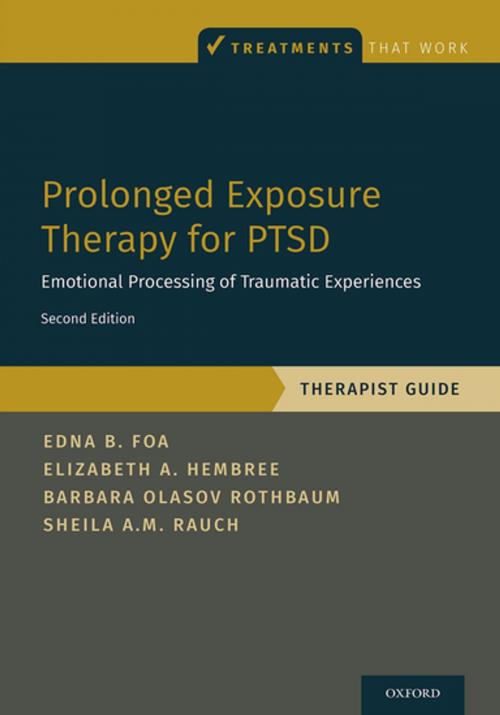Prolonged Exposure Therapy for PTSD
Emotional Processing of Traumatic Experiences - Therapist Guide
Nonfiction, Health & Well Being, Psychology, Mental Illness, Clinical Psychology, Medical, Ailments & Diseases, Mental Health| Author: | Edna Foa, Elizabeth A. Hembree, Barbara Olasov Rothbaum, Sheila Rauch | ISBN: | 9780190926953 |
| Publisher: | Oxford University Press | Publication: | July 26, 2019 |
| Imprint: | Oxford University Press | Language: | English |
| Author: | Edna Foa, Elizabeth A. Hembree, Barbara Olasov Rothbaum, Sheila Rauch |
| ISBN: | 9780190926953 |
| Publisher: | Oxford University Press |
| Publication: | July 26, 2019 |
| Imprint: | Oxford University Press |
| Language: | English |
Prolonged Exposure Therapy is an effective, highly flexible, and very well researched intervention to reduce the symptoms of PTSD across a variety of traumatized populations. The second edition of Prolonged Exposure Therapy for PTSD: Emotional Processing of Traumatic Experiences, Therapist Guide, along with the accompanying Workbook, provides all of the tools necessary for trained mental health providers to implement this first-line PTSD treatment with their patients. This model is individualized to address the needs of a variety of trauma survivors. Leaders in clinical practice, training, and research in the field of PTSD treatment, the authors have revised the Guide throughout to reflect the many advances in PTSD research that have occurred since the release of the first edition, including key adjustments to the underlying theory as well as additional evidence for modifications and individualization for more complex patient presentations and military populations. The Guide provides a concise but thorough description of the key components of the program, how to implement them, and when and how to consider adaptations.
Prolonged Exposure Therapy is an effective, highly flexible, and very well researched intervention to reduce the symptoms of PTSD across a variety of traumatized populations. The second edition of Prolonged Exposure Therapy for PTSD: Emotional Processing of Traumatic Experiences, Therapist Guide, along with the accompanying Workbook, provides all of the tools necessary for trained mental health providers to implement this first-line PTSD treatment with their patients. This model is individualized to address the needs of a variety of trauma survivors. Leaders in clinical practice, training, and research in the field of PTSD treatment, the authors have revised the Guide throughout to reflect the many advances in PTSD research that have occurred since the release of the first edition, including key adjustments to the underlying theory as well as additional evidence for modifications and individualization for more complex patient presentations and military populations. The Guide provides a concise but thorough description of the key components of the program, how to implement them, and when and how to consider adaptations.















